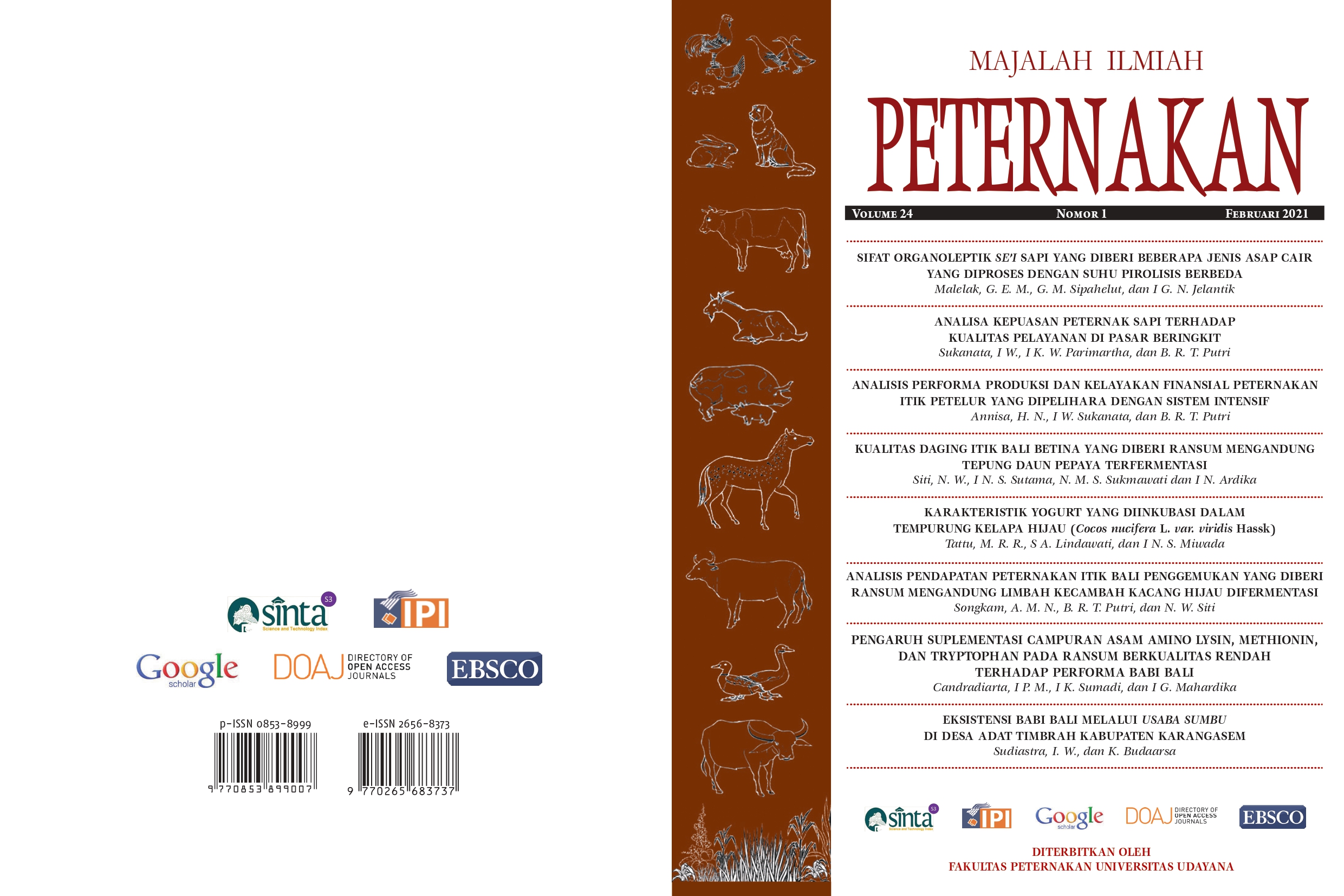ORGANOLEPTIC PROPERTIES OF BEEF SE’I GIVEN VARIOUS LIQUID SMOKE WHICH PIROLISED IN DIFFERENT TEMPERATURE
Abstract
Experiment objecitve was to determine liquid smoke characteristics made from various type of woods that was pyrolysed at different temperatures and its effect on se’i organoleptic. This experiment used completely randomized design (CRD) with 10 treatments and 3 replications. The treatments consisted of P1: se’i without liquid smoke (con- trol); P2: se’i given liquid smoke kusambi 300 oC; P3: se’i given liquid smoke kusambi 350 oC; P4: se’i given liquid smoke kusambi 400 oC; P5: se’i given bidara liquid smoke 300 oC; P6: given 350 oC liquid smoke bidara; P7: se’i given bidara liquid smoke 400 oC; P8: se’i given guava liquid smoke 300 oC; P9: se’i given guava liquid smoke 350 oC; P10: se’i given guava liquid smoke 400 oC. Results showed that kusambi, guava and bidara liquid smoke which was pyrolyzed at different temperatures had a significant effect (P<0.05) on acid, phenol and carbonyl of liquid smoke, se’i color and tatste. In conclusion; bidara liquid smoke with pyrolysed at 300 0C and 350 0C contains the highest carbonyl and phenols, but it is not suitable for se’i processing, because it causes dark se’i color and lowers taste score. Kusambi liquid smoke and guava are suitable for se’i processing.






